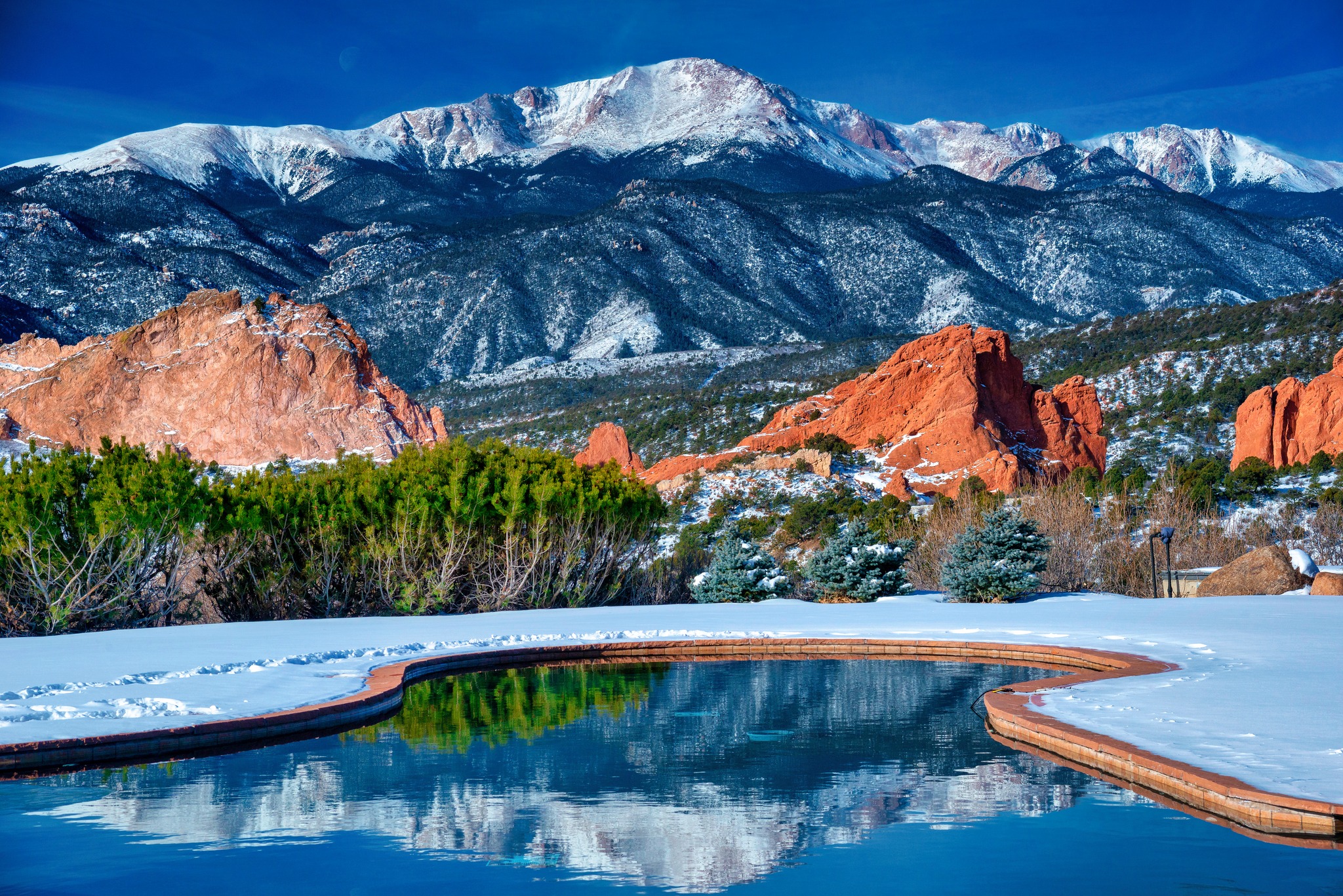The Daily Escape:

Pikes Peak with Garden of the Gods in foreground, Colorado Springs, CO. View is from the reflection pool at Garden of the Gods Club and Resort – November 2022 photo by John Susan Hoffman
On Monday, Biden called on Congress to prevent a rail workers’ strike. Railroad workers are threatening a nationwide strike on December 9, which could deliver a crippling blow to the American economy. According to the Association of American Railroads, a nationwide rail shutdown could cost more than $2 billion per day. Passenger rail transportation would also stop, disrupting hundreds of thousands of commuters.
The unions have rejected a tentative agreement that had secured a pay increase of 24% over 5 years for rail workers, but wages don’t appear to be the primary sticking point. The outstanding issue is paid sick leave. The railroad companies have adamantly refused to include any more short-term paid leave. That means rail workers must report to work, even when they are sick, or forfeit their pay.
The essence of the unions’ position is that rail workers must use accrued paid time off (PTO) for their sick time. Actually, they use PTO for ANY days off. They get about 21 days of PTO annually. The rest of their time, including their weekends, is tightly controlled.
The context is that rail workers do not get weekends or holidays off unless they use their PTO. They’re on call 24/7, and if they refuse a shift after a designated (12 hour) rest period, they are docked points. Since the rail carriers have laid off more than a third of their workforce in the past decade, every shift is understaffed, and on most shifts, everyone who is eligible is likely to be called in.
Rail workers have jobs that often require them to be on the road for weeks at a time. From Heather Cox Richardson: (brackets by Wrongo)
“…[the unions]…oppose a new staffing system implemented after 2018, which created record profits for the country’s main rail carriers but cost the industry 40,000 jobs, mainly among the people who actually operate the trains, leading to brutal schedules and dangerous working conditions.”
The Precision Schedule Railroading (PSR) system made trains more efficient by keeping workers on very tight schedules. Any disruption in those schedules, like a family emergency, brought disciplinary action and possible job loss for the worker.
In the US, the 40-hour work week provides on average, 104 weekend days off per year, plus federal holidays. How many American workers would accept the total of 21 days off that most rail workers will accrue in PTO under the now-rejected Tentative Agreement?
The Railway Labor Acts of 1926, 1934 and 1966 control not only railroad labor disputes but also airline labor disputes. There is a series of steps that must be taken by both sides, and the final steps are where a union may strike, and Congress can step in and enact a law codifying an agreement between the companies and the unions.
The US Chamber of Congress and some 400 business groups, representing a wide range of industries, have sent a letter calling on Congress to intervene before the strike deadline if a deal is not reached to “ensure continued rail service.”
You would think that puts Democrats in a bind. They’re pro-union, but in this case, they’re jumping to the tune of big business. And why did Biden make his announcement a week in advance of the possible strike? A good negotiator would create some uncertainty in the minds of both the companies and the unions. There should be at least the appearance of a strike being possible.
Shouldn’t the “most pro-labor president” in a generation (in 1992, he was one of only six Senators to vote against legislation that ended another strike by rail workers), demonstrate that he’s proud to be on the workers’ side, at least until he isn’t?
Congress also has the option to dictate a cooling-off period, allowing parties to continue negotiating until they reach an agreement, or force both sides to enter arbitration, where a third-party mediator gets involved.
The unions knew that Congress would likely intervene. So workers would rather have a bad deal forced on them than to vote for it.
Four paid sick days is nothing. The fact that the rail companies are unwilling even to give four sick days says everything you need to know about American corporations in 2022.

The railroads are large monopolies created by bad decisions decades ago when the large railroads collapsed. The track should have been nationalized and new carriers allowed to emerge (so mimicking how highways work). Instead the government let the freight business consolidate into a few giants – and these giants did not retain the passenger service which exists via Amtrak (but Amtrak does not have priority over rail freight). There are lots of jobs that give no sick days (or no effective sick days). I say this as a former manager at a KFC. Same with waiting tables (another job i had a long time ago). Right now we cannot afford a rail strike but we do need to understand the actual pay and incentives that keep folks working in rail. I say this knowing for example that for prison guards in NY, while their work lives are hell, they do it because when they retire (a lot earlier than teachers) they take home huge pensions fattened with OT and retire to Florida.
In any case the economy right now cannot stand for a strike – but there is much to learn and much to be done.